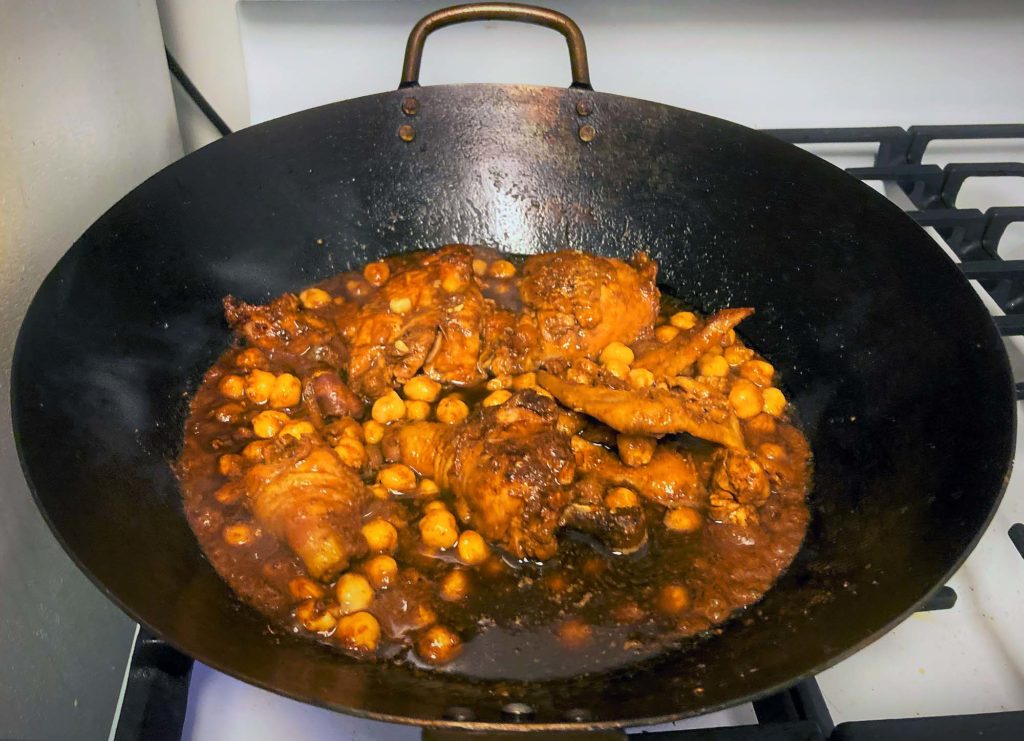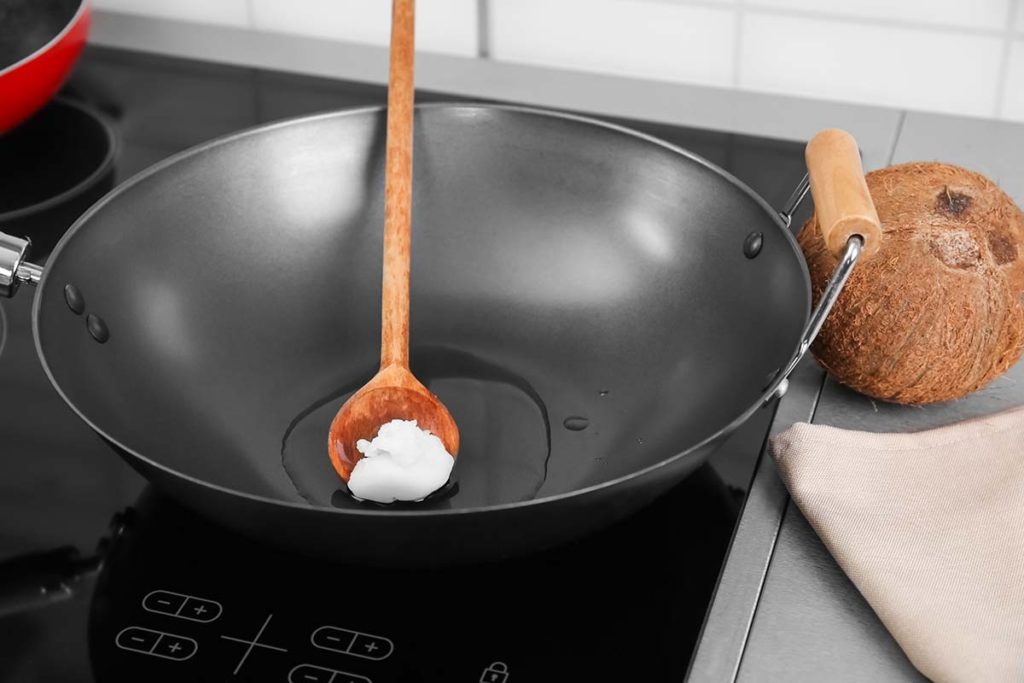When you made a decision to upgrade your cooking skills and properly equip your home kitchen, one of the most important questions you had is what kind of cookware will best set you up for a culinary success. You have also heard about a great type of metal to be on the lookout for your pans and skillet: carbon steel skillets. And we will tell you about carbon steel cookware pros and cons that will help you decide whether this material is right for you.
What Is Carbon Steel and What Is the Fuss All about?
You may have heard that carbon steel is in many ways similar to cast iron, and for a good reason. The reason for this widespread truism is that both cast iron and carbon steel are made by adding carbon to molten iron. The more carbon is added, the higher the carbon content. Cast iron has the highest carbon content of over 2% compared to 0.4 – 1% for most carbon steel types used in carbon steel cookware. And the more carbon, the harder and sturdier the final product is.
Carbon steel pans and skillets are then made by pressing thin sheets of steel into round shapes. The result are beautiful, high quality, and high performance pans that will last you a lifetime. However, there are other amazing types of cookware in the market such as cast iron cookware, non-stick and stainless steel cookware, among others. How, then, do you make a choice?
Faced with such purchase uncertainty, of course you are dying to know what some of the pros and cons of carbon steel cookware are. And, rest assured, we will tell you. Let’s dive into it!
Pros
Carbon steel pots and pans have excellent heat retention
Carbon steel frying pans are like their cast iron relatives: they become piping hot and stay that way for a remarkably long time. Carbon steel cookware takes a bit quicker to heat up and cool off than cast iron, and it is really good since it allows you much more control over the cooking process.
Great heat retention is what you will need when you have to apply heat quickly and evenly. It is what is required to sear a perfect steak, or apply a lot of heat quickly to the various ingredients in a stir fry. This is why carbon steel is one of the most popular metals for woks.
That said, carbon steel is not as great at heat retention as stainless steel, but this is for another article to discuss.
Perfectly seasoned carbon steel cookware is good at non-sticking
Many an aspiring home chef is wary of professional cookware materials such as cast iron, stainless steel and carbon steel because they worry that food would stick to the pan. Instead, they opt out for nonstick cookware, such as a good ceramic nonstick pan that is both healthier than the Teflon covered pan and will last longer. However, once you have mastered the not-so-difficult art of seasoning your carbon steel pan, you should be good to use it with gusto.
We have written an entire article on how to season cast iron cookware. For carbon steel, it is pretty much the same process. If you don’t have time to read the article, here is a summery for you: Wash your carbon steel wok thoroughly. Dry it completely, preferably by heating it up on the stove. Pre-season it by using a good high-smoking point oil. Cool it down and wipe it off. Apply the oil a few more times, cool it down, wipe it off. Repeat it three to five times, and apply a film of oil one last time letting it set. You are done!
Once seasoned, carbon steel pans are excellent at not having your food stick, and you can enjoy their versatility for ages. Proper seasoning and maintenance will remain important, but if you keep it up, your steak will turn out great every time, and you will have a lot of control over the final product.

Carbon steel cookware is lighter than cast iron
One of the gripes people have about cast iron pans is that they are very heavy. The reason for this is that cast iron is dense, and that manufacturers nowadays make them very thick. So, if you are picturing yourself expertly flipping stir fry ingredients in the air, cast iron may not be your best option. But carbon steel is! In fact, carbon steel is one of the most popular materials for woks precisely because it combines the best qualities of cast iron with a relatively light weight.
Carbon steel pans come with sloping sides
As yet another point of comparison with cast iron, carbon steel cookware, including frying pans and woks, comes with sloping sides instead of straight walls. This has a lot to do with the previous point: the much heavier cast iron pans will not be used for flipping food and thus will never really need sloping sides for this specific purpose. (Cast iron woks is an obvious exception to this rule, but their shape has a lot more to do with heat distribution than with the need to toss food in the air.)
This means that whenever a chef needs to flip ingredients, a pan should have sloping sides that can be used as a ramp. This is as true for woks, as it is for stir frying pans or even for sauté pans.
Carbon steel pans will last forever with good care
Carbon steel pots and pans can really be the only ones you ever need – provided proper care has been taken, surface seasoned and patina acquired. Their durability has earned them the love of many a great chef out there, and carbon steel pans and woks dominate the kitchen of your local Chinese takeout for that very reason. They are like the Asian version of German car engineering – well-built, reliable and lasting.
Now on to the not-so-sexy part of our pros and cons for carbon steel cookware.
Cons
Carbon steel cookware heats unevenly
Although this problem is a lot less persistent with a carbon steel pan than with a cast iron skillet, it does not heat evenly in every part of the pan. In this aspect, stainless steel cookware is a lot more superior, for example. This is why professional chefs usually prefer stainless to carbon steel when frying a steak: Maillard reaction is a lot more uniform across its entire surface and this is what is desirable in a great steak.
A home chef will experience this issue when using a wok at home. A flame produced by a home kitchen stove is a lot less powerful than that in a restaurant kitchen, which means that the sides of your wok will not get as much exposure to the heat as they would in a restaurant. Thus, the food in the bottom of the wok will get seared very quickly whereas the food that’s closer to the sides will be still uncooked.
This problem can be overcome with good old trial and error until you figure out how to best move food in your particular wok interacting with your specific stove. But uneven heat distribution is a problem that needs to be recognized and discussed nonetheless, if you need to make as well-educated decision about your carbon steel cookware as possible.
Carbon steel pans need maintenance

Carbon steel cookware requires seasoning, just like cast iron. Seasoning of cookware has nothing to do with spices. Instead, it is a process where oil molecules penetrate tiny pores in the steel surface of your pan, essentially getting cooked in. This creates a thin protective film, called patina, on the surface of your pan.
Some people think that seasoning require a lot of extra work, and thus become reluctant to buying pots and pans that need so much extra care. This extra work makes people look unfavorably upon carbon steel vs other cookware materials. In reality, the process is as easy as regularly washing the dishes or conducting any other kind of routine maintenance. Once you know what you are doing, it quickly becomes your second nature, and thus not a con at all!
Carbon steel cookware is not dishwasher safe
Since iron naturally likes to oxidize – which is the fancier way of describing getting rusty – scientists figured out how to make iron rust-resistant by adding chromium into the mix. Chromium does not let the molecules of oxygen to react with molecules of iron in the presence of water which acts as a catalyst, and thus never lets rust to occur. Welcome stainless steel.
Unlike stainless steel, carbon steel does not include at least 11% of chromium as part of the alloy. Ultimately, this means that putting iron, carbon steel or cast iron into a prolonged contact with water – such as a dishwashing process – will expose them to rusting.
As a result, washing carbon steel is a bit more complicated. You will need to wash it by hand and by using very mild soap, and then dry it over high heat before applying a protective layer of oil. Similar to the process of seasoning already described. Again, even if it is slightly more labor-intensive, this washing process can blend with the regular seasoning process and thus can prevent rust from ever thinking to occur on your beautiful old wok.
Carbon steel cookware does not like highly acidic foods
Acids might be harmful to carbon steel cookware, specifically to the outer patina layer that we described earlier in this article. The reason is that acids dissolve fats, and patina is nothing other than fat (oil) cooked into the surface of the carbon steel pan.
This is a pretty easy problem to overcome by, again, creating another layer of patina through the beautiful seasoning process we have just described.
Final Words
So now that you know your pros and cons of using carbon steel in your kitchen, you can now decide how it compares to other types of cookware. Now you should be equipped to handle the slight challenges that can hardly offset the tremendous benefits and pure pleasure of using this time-tested metal in your own home restaurant.
